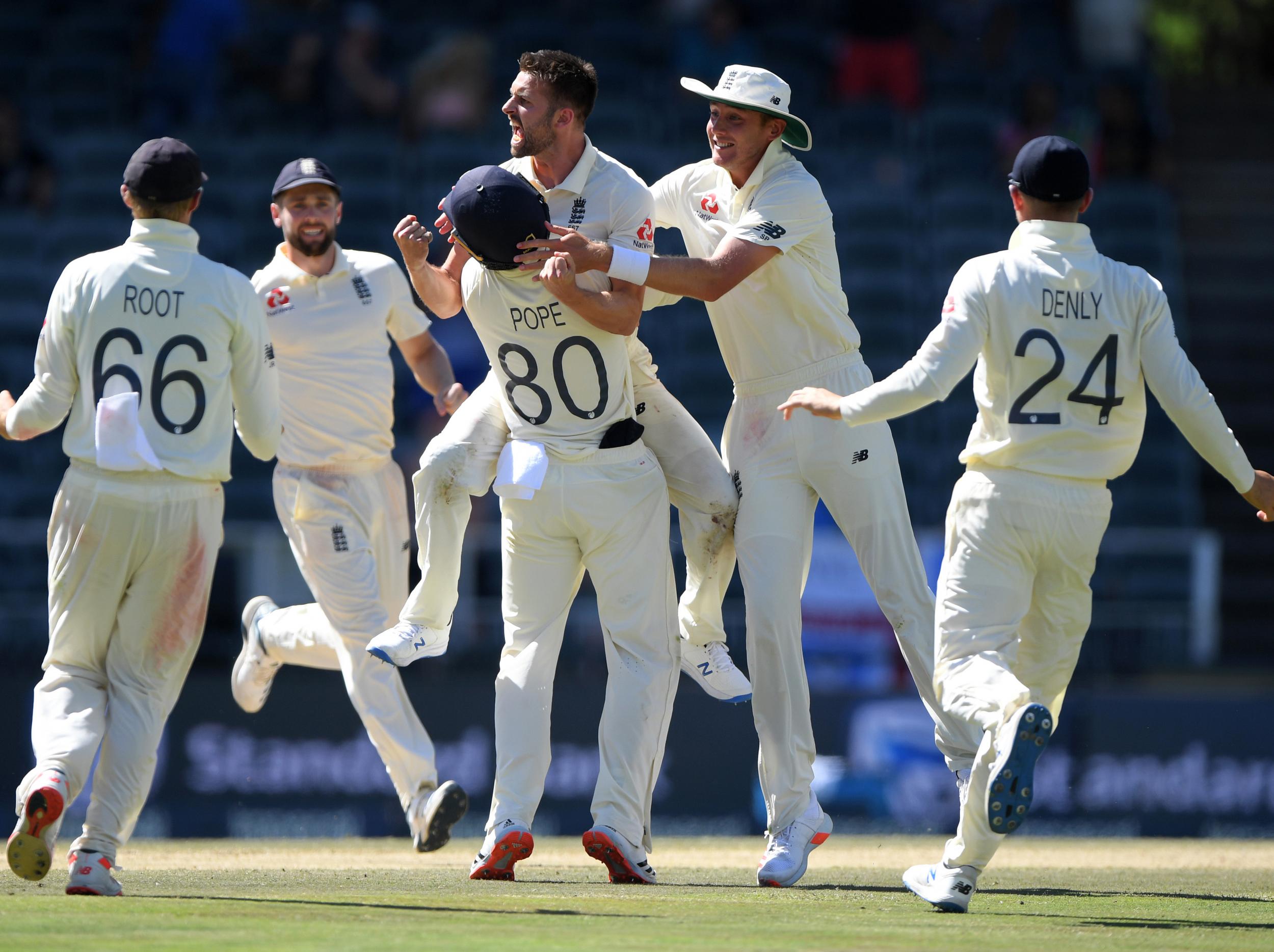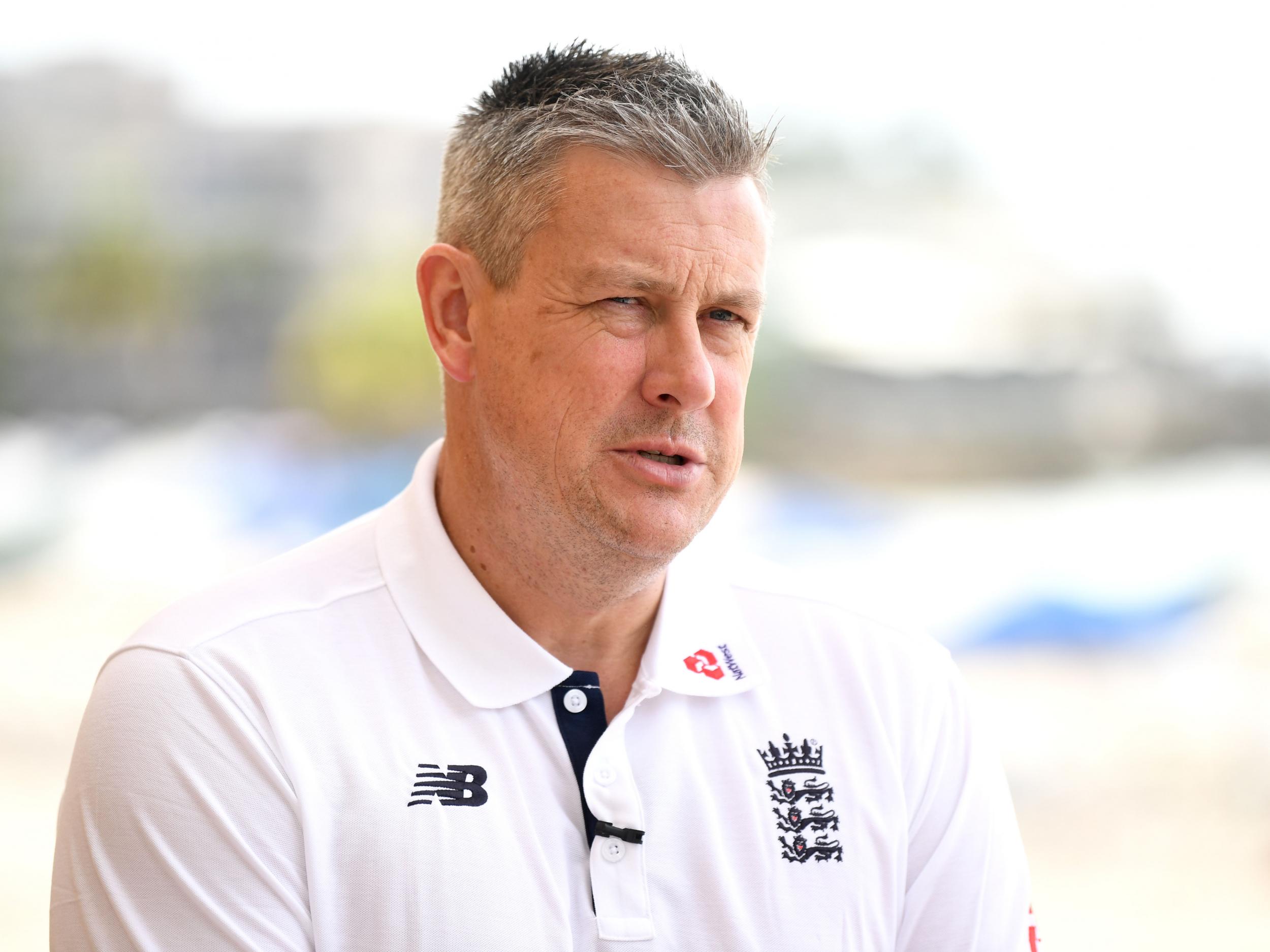Coronavirus: England cricketers to begin returning to individual training from next week
From Monday, centrally contracted bowlers and invited county bowlers will begin tailored programmes in controlled environments at venues across the country
Around 30 of England’s male cricketers will return to individual training from next week as the ECB announced measures to ensure the safety of its players and coaches.
From Monday, centrally contracted bowlers and invited county bowlers will begin tailored programmes in controlled environments at seven venues across the country, in line with the government’s elite sport return to training guidance. After a two-week period, once the bowlers have reached their desired loading efforts, dedicated batsmen and wicketkeepers will start their programmes on an individual basis with four more grounds to be used.
Of the work needed to get match fit, a bowler’s need is greater and more specialised. If the earliest scenario of a 8 July start of a Test series against West Indies comes to fruition, this six-week lead-in will be ideal for seamers and spinners to reacquaint themselves with their craft and build up durability with overs bowled in a net, even if competitive action will be lacking ahead of what may be a gruelling few months if things go to plan. The bowlers will be a bigger group to cover injury, for net bowling purposes and, going forward, for practice matches.
The 30 or so to be picked will be decided by a committee of managing director of men’s cricket Ashley Giles, performance director Mo Bobat, head coach Chris Silverwood and selectors. Giles was keen to stress squads are not equivalent to “England selection”. “These are guys with a red ball focus who may or may not have been involved in our system, this winter and before, who we’d like to go back to training”. A full list of players will be released next week.
Sessions will be staggered with strict adherence to social distancing and hygiene, with temperate testing protocols for players and staff before training. They will source and fund Personal Protective Equipment (PPE) for their medical officers to carry out these checks. Those medical officers or county physios will be in attendance along with a coach and, depending on availability, a strength and conditioning coach. The aim, as Giles states, is to ensure "it's safer to go back to practice than it is to go to the supermarket".

Dressing rooms, along with other venue facilities will be closed, meaning players and staff must arrive in their own training kit.
“I’ve already spoken to a number of CEOs around the country we’re trying to get help from because in this early phase we don’t want guys travelling a lot, we want them to train at their own local venue,” said Giles. “We’ve had a lot of support which is great there’s a real united front on this and I think everyone understands the importance to the game of getting international cricket on this year from the economics point of view.
“We’re definitely going to have to mobilise the help of some of our network coaches which is great. So an example, at one venue guys may train individually but with the same coach, a single coach for four or five bowlers.”
That mobilisation will involve enlisting coaches and indeed some players who have been furloughed by their counties on the government’s jog retention scheme. The ECB will have to pay for their time so they do not contravene the terms of their furlough with their specific employers. “There is a cost to putting cricket on,” mused Giles, “but there is a much bigger cost to not playing cricket at the moment.”
While players admit to a degree of trepidation at coming back, with Jos Buttler stating on Wednesday that he had “natural apprehension” about the prospect of returning to outdoor training next week, no player has ruled themselves out so far. Information and assurance has been constant from the ECB, and there is no pressure on players to take part in these sessions should there be any worry over safety.
“In terms of individuals – there are opt-outs – we are not going to force anyone to go back to training or playing if they are not comfortable. Through that physical and mental screening process we will do our due diligence and see where individuals are. In this first phase, this should be a safer environment than going about daily life as it is – shopping etc. We are also outside where we know the risks are far less.
“These are different circumstances and there will be no prejudice. It is what it is, it’s an individual choice, but I hope we can put things in place and an environment that’s safe enough for guys to trust us that they can go back and take those first tentative steps to cricket.”
The longer-term goals pertain to creating what Giles describes as “a household of 35 players and staff”, whereby behind-closed-door Test matches can take place at secure venues that allow players to co-exist without too many constraints – just as a family would go about as normal in their own homes. Much of that is dependent on how government advice on the easing of lockdown changes accordingly.

There is hope, too, that things may progress to a stage where players could come and go from the secure bubble of the Test grounds, which are to be either the Ageas Bowl or Old Trafford, rather than spend up to three months in onsite hotels for the series against West Indies and Pakistan, along with one-day series with Ireland and Australia. That is preferable for all players, particularly those with young families and, for instance, Test captain Joe Root, who is expecting the birth of his second child in July.
“It is around mitigating risk – how much risk is there in that? The idea once we go behind closed doors – if that is what step 3 looks like – is we are trying to create an enlarged household. As we are living now with four in this household, there may be a household of 35 players and staff in and around that Test squad. Once they are in that environment and tested and clear, we hope they can lead pretty normal existences.”
“Getting them comfortable with being behind (closed doors) or being in those environments for long periods of time, we have to look at ways where we can get players home. It isn’t normal. Whilst these guys are used to touring for perhaps three or four months these aren’t normal conditions and with what’s going through the country people will want to see families, they are going to want to get home and see their kids.”
“Our players will do anything they can to get this going. We have a good bunch of players. But it isn’t realistic to expect them to be in a bubble for 10 weeks. We are either going to have to be smart with how we can get guys in and out of that environment. Testing and tracing and tracking will have changed a hell of a lot by then and that should help us. Otherwise we are going to have to be smart with selection.”
Amid all this, Giles remains optimistic the West Indies will the trip to England despite cricket West Indies chief executive Jonny Grave declaring players are “very nervous” about touring. The effort put into allaying the fears of home players will need to be replicated 10-fold when it comes to convincing those travelling from the Caribbean. Dialogue at chief executive level has been promising, and though Giles says his and the ECB’s primary focus must remain on “fighting their own fires” there is an understanding that the burden of what happens next is a collective one.
"A big part of my job is trying to get cricket on and there are performance aspects of what we do, whether that’s winning and being the best, but I also have a responsibility, as we all do across the world at the moment, we have responsibility for our businesses and to try to get cricket going. That has to be safe and it has to be right and I don’t think we would ever compromise the safety of our players and our people.
“But right now I’m confident with the trajectory we are on. Who knows what the UK will look like in two or three months time or the world. We hope we don’t take another dip which would set all of us back but if we continue this trajectory hopefully we will have conditions where we can play some Test cricket.
For the time being, England women’s players are pencilled in to resume their training in late June. And as part of the ECB’s continual dialogue with the 18 first-class counties, there is hope for some clarity on when domestic players can return to outdoor training with the prospect of a behind-closed-doors T20 Blast later in the summer.
There will be a further announcement on the next two phases of training which will be imposed by the government in conjunction with the ECB’s medical team.
Join our commenting forum
Join thought-provoking conversations, follow other Independent readers and see their replies
Comments
Bookmark popover
Removed from bookmarks